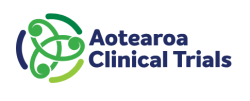Staphylococcus aureus bacteraemia (SAB) is one of the most common serious bacterial infections seen in Aotearoa New Zealand. A conservative estimate for the incidence of SAB in the country is around 1100 people per year, which is amongst the highest reported in the developed world. SAB carries a 15-20% mortality, and patients with SAB typically have prolonged hospital stays. SAB disproportionately affects Māori and Pacific Peoples, babies, the elderly, and those living in socioeconomically deprived areas. Current SAB treatment involves prolonged courses (several weeks) of exclusively intravenous (IV) beta lactam antibiotics.
Prolonged IV antibiotics are associated with increased risk of adverse effects and complications, inconvenience for the patient, and cost, compared with oral antibiotics. There is no evidence to demonstrate the superiority of IV administration in terms of clinical outcomes. There are also many areas of Aotearoa New Zealand that have limited access to home-based IV antibiotic therapy (OPAT), meaning patients in these areas with SAB need to travel long distances or remain in hospital for treatment. These areas are commonly more rural, have higher Māori populations and are more socioeconomically deprived.
The publication of several high-quality studies of early transition to oral antibiotics after a short period of IV treatment (‘early oral switch’) in complicated and uncomplicated Staphylococcus aureus infection scenarios (not necessarily bloodstream infection) has prompted interest in investigating this strategy for SAB treatment. Pre-clinical evidence from work by researchers in Aotearoa New Zealand suggests co-administration of oral beta-lactams with probenecid (probenecid-beta-lactam combination therapy – PCT) significantly improves blood levels of the beta-lactam antibiotic (drug exposure), often to the extent where levels achieved via the oral route could be considered pharmacodynamically ‘equivalent’ to those achieved via IV administration.
This evidence, suggesting PCT is a safe and effective alternative to weeks of IV antibiotic therapy, does not meet the high threshold required to change clinical practice, or be incorporated into SAB treatment guidelines.
The aim of the proposed study is to produce robust pharmacological and clinical data demonstrating that PCT achieves drug exposure that is equivalent to what is achieved with IV therapy. This would provide evidence supporting the shortening and replacement of prolonged IV antibiotic courses for SAB with oral treatment.
This project will leverage the existing infrastructure associated with the Staphylococcus aureus network adaptive platform trial (SNAP), which is an international study of SAB that is active in many locations in Aotearoa New Zealand already. Patients enrolled in SNAP who consent to enrolment into the PR-O-SNAP study would have blood samples collected at 2-3 different time points during their treatment to assess drug exposure whilst on IV therapy and PCT. Pharmacodynamic modelling will be used to compare the drug exposure achieved at the different time points.
Summer Studentship
As part of a ‘summer studentship’ project, we will also interview SAB survivors enrolled in PR-O-SNAP to ascertain their perspectives and experiences of IV and oral antibiotic treatment. Evidence generated from this qualitative patient-centred work will allow more nuanced discussions and enhance shared decision-making between clinicians and patients, and could contribute inform SAB treatment guidelines.
>> PROJECT STARTED - 1st October 2023










